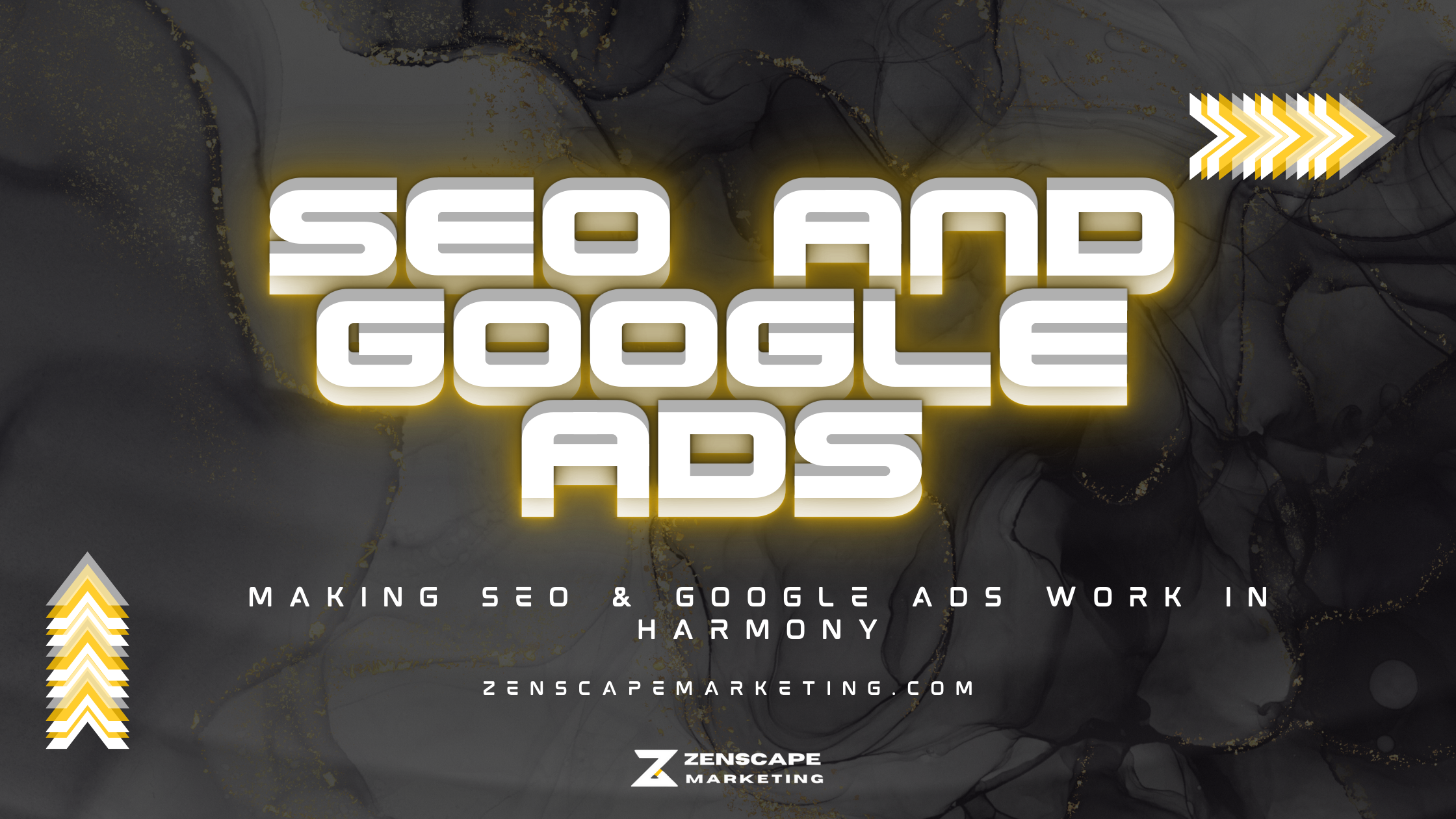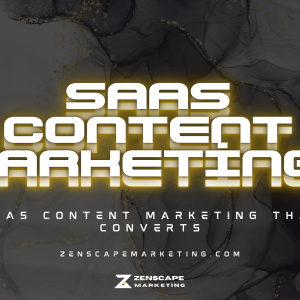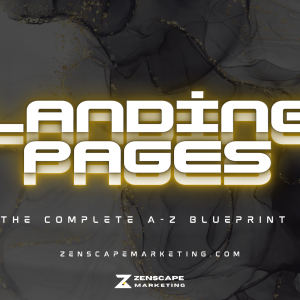Search engine optimization and Google Ads are two of the most effective digital marketing channels for driving leads and sales. SEO focuses on earning organic rankings so people find you via search engines. Google Ads places paid text ads above and beside search results. Each strategy has unique benefits. But they become even more powerful when integrated into a harmonized approach. This article will explore tips for making SEO and Google Ads work seamlessly together to maximize conversions. Aligning your SEO content and PPC campaigns creates a synergy that amplifies results.
Set Conversion Goals for SEO and Ads
Defining clear, shared conversion goals is a crucial first step to ensure your SEO and Google Ads strategies work cohesively. Having the same objectives and KPIs keeps both programs aligned and focused on generating the desired outcomes from searchers.
Start by brainstorming the key conversions and actions you want visitors to complete. Be as specific as possible when setting goals. Quantify expected lead counts, sales numbers, download figures, etc.
Example conversion goals can include:
- Number of leads generated through opt-ins
- Form completions or demos scheduled
- Clicks on calls-to-action like chat buttons and phone numbers
- Email newsletter sign-ups
- Ebook or gated content downloads
- Online purchases and average order values
- Consultation requests booked
- Customers acquired and retention rates
Also, set revenue targets, cost-per-acquisition, and return on ad spend goals for paid search. These will optimize the profitability of ads.
With clearly defined goals set, optimize and coordinate your SEO content and Google Ads campaigns to convert visitors into these successes. In your content strategy, focus topics and offers on pushing target actions. Craft compelling headlines and copy geared to goals.
For Google Ads, align ad text, keywords, and landing pages to guide searchers to convert. Bid higher for keywords indicative of those conversion goals. Continuously optimize ads using target cost-per-conversion, ROAS, or conversion volume as the metric.
Consistently evaluating performance data will reveal which strategies and keywords reliably deliver your KPIs. Double down on what moves the revenue needle to transform SEO and Google Ads into conversion machines.
Having unambiguous, measurable conversion goals powerfully focuses on SEO and PPC. Both channels work hand-in-hand, driving searchers to those defined targets. The result is achieving business growth objectives faster and more economically.
Use SEO Keywords to Inform Ads
Extensive keyword research should form the foundation of your SEO plan. Use those exact target keywords to build SEM ad groups, keyword lists, and ad copy.
Choose keywords based on audience search intent and industry research. Long-tail variations often convert better. Tools like Google Keyword Planner help find low-competition terms.
Incorporate researched keywords into expanded text ads. Keep ad copy consistent with your SEO content theme. Maintaining keyword continuity between channels boosts performance.
Coordinate Ad Campaigns to Support SEO
Strategic coordination between SEO content and ad launches can create a powerful combined effect. For example, when publishing a new blog post or website page, also promote it through Google Ads.
The paid traffic will amplify early visibility while search rankings ramp up. You can also create PPC landing pages optimized explicitly for those blog post keywords. This aligns with the SEO page to provide a consistent experience.
Use ads to prioritize driving traffic to pages or content you want to rank well. The initial boost can kickstart organic momentum.
Align Landing Page Experiences
When a search visitor clicks your organic listing or paid ad, they arrive at a landing page experience on your website. To maximize conversions, closely align SEO landing pages and Google Ads destination pages.
Consistency between the post-click experiences coming from organic vs paid keeps the user journey cohesive. This builds visitor confidence and trust when they land on your site, improving on-site engagement.
Several key page elements should be synchronized:
Messaging and Value Propositions: The headline, subheads, and copy on both SEO and PPC landing pages should convey consistent value propositions relevant to the searcher’s query.
CTA Placement:
Calls-to-action like contact forms, demos, and ebook downloads should be in identical placements so visitors can easily take the following steps.
Page Layout:
Overall page structure, content sections, visuals, and general design should be similar between landing pages. This strengthens continuity.
Branding:
Maintain consistent logo placement, fonts, colors, and other branding so paid and organic pages feel like one unified experience.
Beyond landing pages, coordinate the post-click experience across microsites, product pages, and other on-site destinations. Whether visitors come from SEO or Google Ads, each step should nurture them towards conversion goals.
Analyze your search funnel to identify where visitors enter and exit. Look for gaps between SEO and Ads journeys, like mismatched messaging or pages. Tighten these by aligning page designs, CTAs, content, and channel navigation.
With consistent experiences from organic and paid search, you remove friction and build visitor confidence. This seamless post-click harmony results in higher on-site engagement and conversion of leads.
Track Conversions Across Channels
To unlock the full potential of integrated SEO and Google Ads, accurately track and analyze conversions generated from each channel. Understanding the complete cross-channel customer journey is crucial.
Implement UTM campaign tags in your links to tag traffic sources like organic search, paid search, social media, etc. Install Google Analytics and connect to your ads account. This allows you to view granular conversion data by channel.
Use unique phone numbers on each platform to identify call conversions per source. Implement lead forms and analytics tracking on conversion pages to attribute conversions to the initial click channel.
Analyze which buyer journey stages are influenced by SEO vs. Google Ads. For example, what keywords and ads start the awareness phase? Do organic blog posts or paid YouTube video ads affect consideration? What drives final conversions – email sequences from SEO or remarketing ads?
Gain visibility into the assist and multi-touch attribution across the two strategies. Learn which combinations influence email sign-ups, content downloads, purchases, and other goals.
This cross-channel conversion data reveals powerful optimization insights. Double down on the SEO and Google Ads levers working in synergy to hit business KPIs.
Based on performance data, continuously refine campaign elements like keywords, landing pages, ad copy, CTAs, and lead nurturing pathways. This enhances positive interactions between SEO and Paid Search for superior conversion results.
With a clear view of multi-touch journeys across channels, you can optimize seamless experiences, taking searchers from discovery to conversion using the strengths of SEO and Google Ads.
Conclusion
By coordinating efforts and adopting an integrated approach, SEO and Google Ads can work harmoniously together for phenomenal results. Consistent keywords, aligned ad copy and landing pages, shared conversion goals, and multi-touch attribution modeling ensures the strategies complement each other.
Get More from Your SEO and Google Ads Together
If you want to align your SEO and Google Ads for maximum results, the digital marketing experts at Zenscape Marketing can help. We develop integrated strategies to create seamless synergy between organic and paid search efforts. Our seasoned team will conduct in-depth keyword research to inform campaigns in both channels. We’ll identify and optimize key conversion goals for your business across SEO content and PPC ads.
Zenscape Marketing will align messaging, landing pages, and cross-channel tracking to create a unified user experience. We’ll provide ongoing performance analysis to improve integrated results continuously. Stop running disconnected SEO and Google Ads initiatives. Partner with Zenscape Marketing to make them work in perfect harmony and take your lead generation to the next level.
Contact us today to learn more about our holistic SEO and Google Ads management approach!






